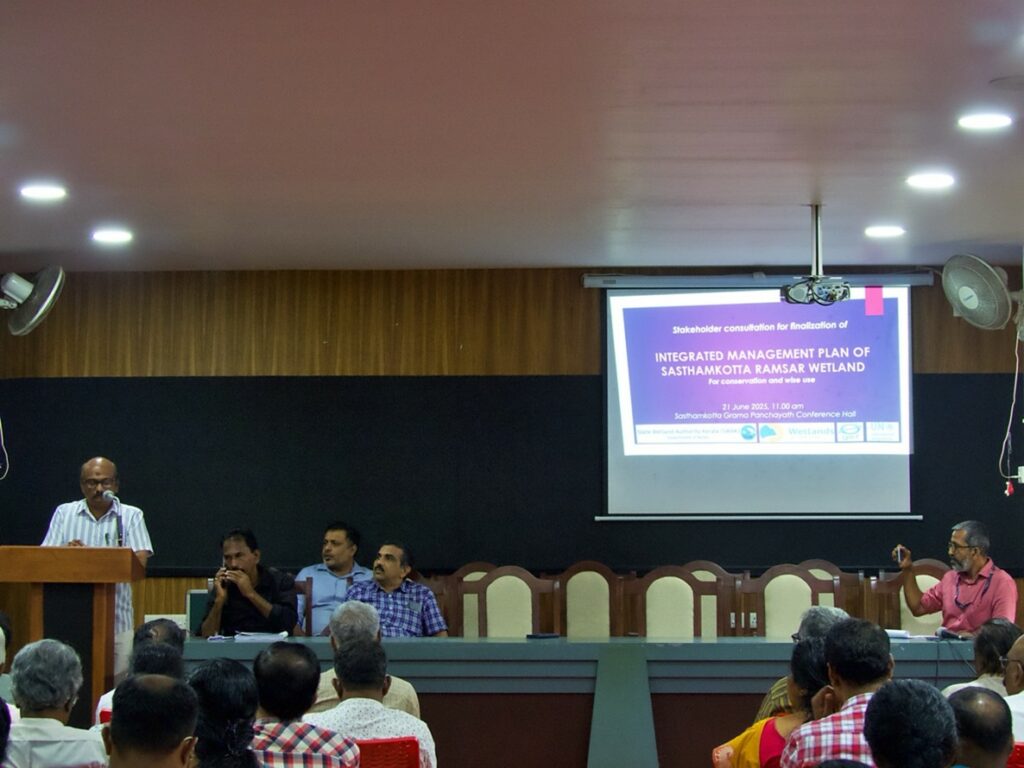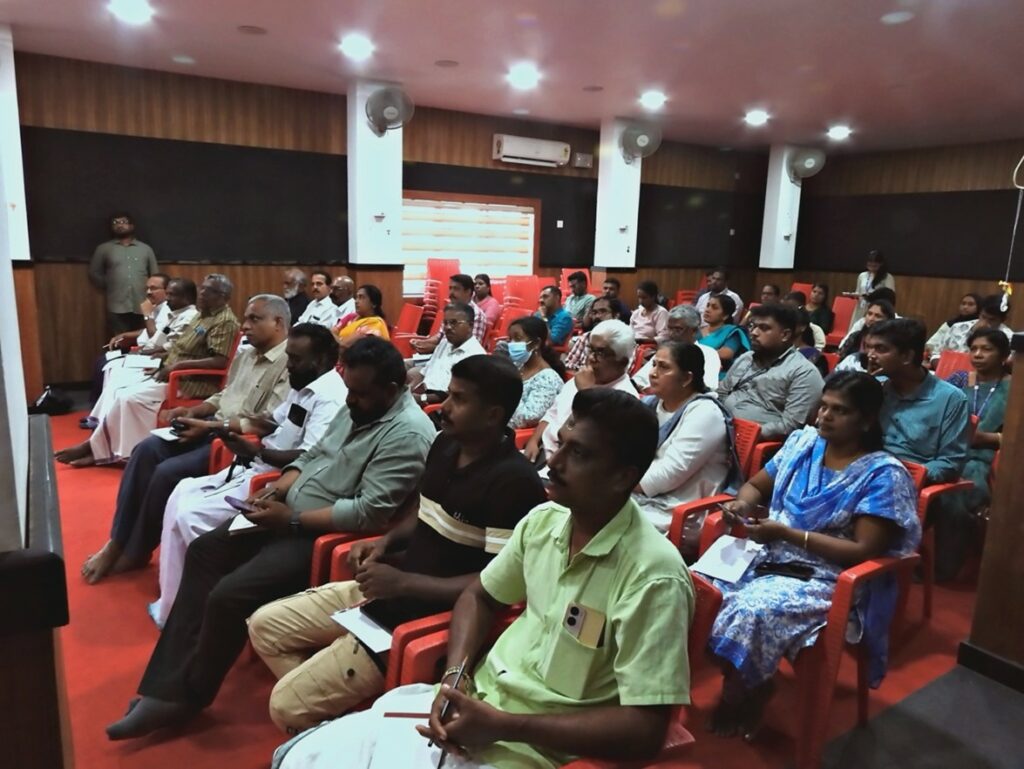
Final Stakeholder Consultation on Revised IMP for Sasthamkotta Ramsar Wetland
-
Capacity development
-
Healthy Wetland Nature
-
Integrated management planning
-
Wetland values, status and trends
State Wetland Authority Kerala, in collaboration with Wetlands International South Asia, organized a stakeholder consultation meeting on 21st June 2025 at the Panchayath Conference Hall, Sasthamkotta, to finalize the revised Integrated Management Plan (IMP) for the Sasthamkotta Ramsar Site. The consultation aimed to gather stakeholder feedback on management strategies for the long-term conservation and wise use of the wetland ecosystem.
Welcoming the Stakeholders
The session began with Dr. Jude Emmanuel, Environmental Scientist, Directorate of Environment and Climate Change (DoECC) and Ramsar Site Manager – Sasthamkotta Lake, who welcomed the participants and outlined the significance of Sasthamkotta as Kerala’s largest freshwater lake and its Ramsar designation.
Remarks from Key Officials
A series of addresses followed from district- and panchayath-level dignitaries:
- Mr. Arunkumar S., Assistant Director of Soil Conservation, Sasthamkotta, discussed land degradation and the necessity for catchment conservation interventions.
- Mr. Roy Kumar, Deputy Collector (Land Acquisition), Kollam District, emphasized the importance of coordinated efforts for wetland protection.

Presentation of the Revised IMAP
Ms. Nivedhitha M.P., Programme Associate, Wetlands International South Asia, presented the highlights of the revised Integrated Management Plan, developed under the GEF–MoEFCC–UNEP funded IMWBES Project. Key elements of the plan include:
- Restoration of the hydrological regime and ecological character
- Strengthening community-based monitoring and management via the Wetland Mitra Network
- Establishment of the Sasthamkotta Wetland Management Unit (SWMU)
- Integration of wetland biodiversity in local People’s Biodiversity Registers
- Promotion of sustainable livelihoods, nature tourism, and waste management infrastructure
- Use of the Wetland Inventory, Assessment and Monitoring System (WIAMS) for data-driven decision making
The presentation also highlighted the component-wise budget & financing, climate risks to the wetland, including increased rainfall variability and rising temperatures, which have implications on water balance, biodiversity, and livelihoods.

Stakeholder Dialogue and Feedback
Participants engaged in an open discussion, offering valuable feedback and suggestions for strengthening local participation, enhancing the monitoring network, and incorporating traditional knowledge in the management process. Issues raised included encroachment, the need for solid waste management, water quality deterioration, an increase in otters and the revival of fisheries-based livelihoods. The monitoring of the water extracted and wastewater generated after the drinking water treatment by KWA before discharging back to the lake also needs to be monitored and addressed. The participants also mentioned the need to have representatives from the local people/organisations to be included in the Advisory Board/Executive Committee of the Wetland Management Unit. Conducting social audits to ensure transparency, accountability, local ownership and social equity and inclusivity was also emphasised by the participants.

Concluding the Dialogue
The session concluded with remarks by Dr. John C. Mathew, Environment Programme Manager, DoECC, who outlined the way forward. He answered many of the questions raised by the participants and emphasized the importance of institutional convergence and committed to facilitating the timely implementation of priority actions outlined in the integrated management plan.
About Sasthamkotta Lake
Located in Kunnathur Taluk of Kollam District, Sasthamkotta Lake is Kerala’s largest freshwater lake, designated a Ramsar Site in 2002. It serves as a critical drinking water source for over 0.5 million people and supports diverse ecological, cultural, and economic values. The revised IMP aims to secure the ecological integrity of the lake while enabling sustainable development.
